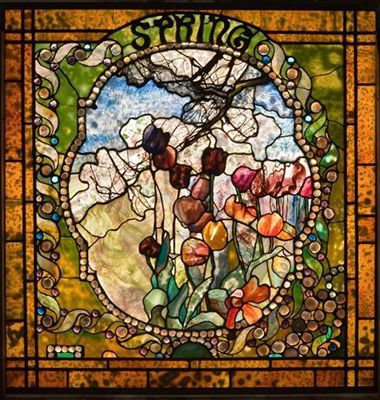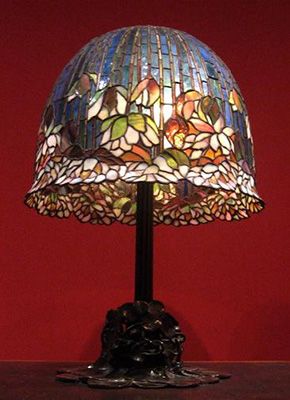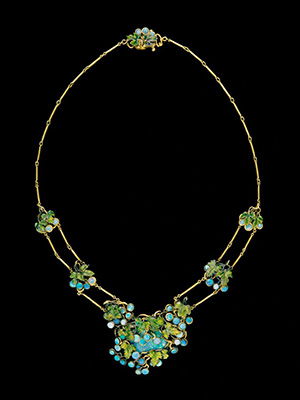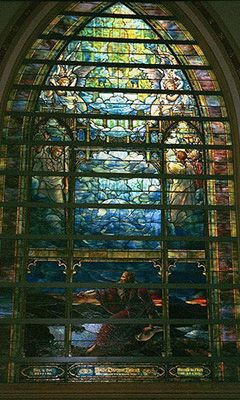
For over a hundred years, the Tiffany lamps have dazzled as a decorative artwork icon.
Celebrated for its handmade craftsmanship and stated for its stained glass shade,
Louis Comfort Tiffany’s lamp stays a fixture in museums and living rooms alike.
Tiffany believed that nature ought to be the most necessary provide of plan idea and the extensive majority of his parts characteristic graphics of landscapes, plants, or animals.
His work cautiously aligned him with Art Nouveau and he used to be as soon as very large in introducing the action to America,
assisting to popularize it via his designs and encouraging others to work in a related style.
Louis Comfort Tiffany the founder of the Tiffany Lamps
Louis Comfort Tiffany (1848-1933) used to be as soon as the eldest son of Charles Louis Tiffany, founder of the world-renowned silver and rings affiliation Tiffany & Co.
Refusing to take area in his father’s company,
Tiffany took up painting at a youthful age and even as in his twenties traveled particularly in Europe, North Africa, and the Middle East.,
however, he grew to come to be concerned in glassmaking after staring at a sequence of Roman glass at
the Victoria and Albert Museum in London.
Coming back to New York, his education and passion for the stained glass he commenced to work on new strategies
which would revolutionize the still-used Medieval strategy of portray on glass.
Tiffany was mainly attracted to the rustic nature of the historic glass—a first-rate that present-day glass artists rejected.
To Tiffany, these imperfections had been no longer fully beautiful, on the other hand, the key to conducting attractive color.
Tiffany Glass and Decorating Company.
As a decorator, Tiffany proved famous with a vary of clients,
from rich humans to the president of the United States.
Following his profitable stint as an indoors designer,
determined, Louis Comfort Tiffany and Associated American Artists begin his personal glassmaking firm

Inspired by using this idea, his headquartered glass manufacturing facility in Queens, New York.
In addition to running the factory, Tiffany and a team of designers hooked up Louis Comfort Tiffany and Associated American Artists, an indoors diagram studio.
Tiffany went on to structure his private organization and to produce magnificent lamps, vases, and murals in the Art Nouveau style.
Instead of painting onto the glass to reap aspect in the everyday manner of stained-glass production,
Tiffany distributed with the paint and used glass on my very own to create his objects,
permitting the parts of glass to dictate the structure of the performed product.
Tiffany developed two important innovations:
With the glass of Ancient Rome in mind, he strived to create colourful portions besides the use of paint.
To reap this, He additionally labored to enhance new techniques and methods such as favrile glass and the copper foil technique. and the formation of opalescent glass which produced richer hues and greater fascinating effects, giving him a larger preference for uncooked materials.
These improvements allowed him to create fairly difficult portions that had been completely novel inside the area of glassmaking. He quickly won focus as a dressmaker and fabricator of stained glass home windows and loved commissions from many rich clients.

At the 1893 World’s Fair in Chicago, Tiffany debuted favrile glass—a glass he in contrast to “the wings of certain
American butterflies, the necks of pigeons and peacocks, the wing covers of quite a number beetles.”
Unlike the painted iridescent glass of the past,
favrile is executed with the aid of mixing specific colored
glass collectively whilst hot.
Tiffany employed each of these techniques when conceiving his most massive design: the Tiffany lamp.
One of America’s most amazing artists, Louis Comfort Tiffany
mixing Favrile Glass, and cooper making glass with deep, glowing coloration which some distance surpassed, in satisfactory and beauty, all present techniques.
Heres few below Enjoy!!!
The Four Seasons (1900)

Exhibited as a single stained-glass window at the 1900 Exposition Universelle in Paris,
The Four Seasons serves as a lasting instance of Tiffany’s favrile technique.
Beginning with spring on the higher left (shown here) and ending with iciness on the decrease right, every pane represented a special season and together,
they symbolized the system and shape of existence and death.
Pond Lily Library Lamp Opals, gold, enamel – Metropolitan Museum of Art

The Pond Lily Lamp the structure of intertwined lily leaves and stems.
Tiffany used to be one of the first designers to see the possible of electric powered lighting fixtures and he utilized electrical energy in his lamp designs from 1898.
instead to create slim bases and lamp stems, as in this design.
It is one of solely 5 examples on hand in public collections, with 9 others in personal hands.
Loving Art At Its Finest
Enamel on copper – Necklace Metropolitan Museum of Art

It was once designed, alongside with 26 different pieces, most in the Arts and Crafts style, for the Louisiana Purchase Exposition.
The central pendant is a massive cluster of opals that characterize grapes surrounded with the aid of leaves made of enamel and gold.
The Holy City Leaded glass and bronze – Los Angeles County Museum of Art

Tiffany designed for the Brown Memorial Presbyterian Church in 1905.
It is notion to be the greatest window he ever produced and is composed of fifty eight panels.
Tiffany Studios had been accountable for producing lots of stained-glass home windows for churches, as nicely as some synagogues, in the course of America, especially after the advent of his ecclesiastical division in 1899.
The home windows they produced drew on a large vary of historic patterns and biblical stories. This instance depicts St. John in exile on the island of Patmos.
The fall and Rise of Tiffany Lamps
While Tiffany lamps fell out of trend (and even ceased production) through 1913, they noticed a resurgence in the 1950s.
Since then, they have emerged as a collector’s item, performing in non-public collections, public sale houses, exceptional artwork museums, and, for some fortunate thrifters, even unassuming vintage retail outlets and flea markets.
In addition to nature, Tiffany Studio additionally discovered suggestion in geometry, culminating in a series of Arts and Crafts-esque lampshades.
Though much less ornate than the former, these first-rate lamps continue to be equally adored.

